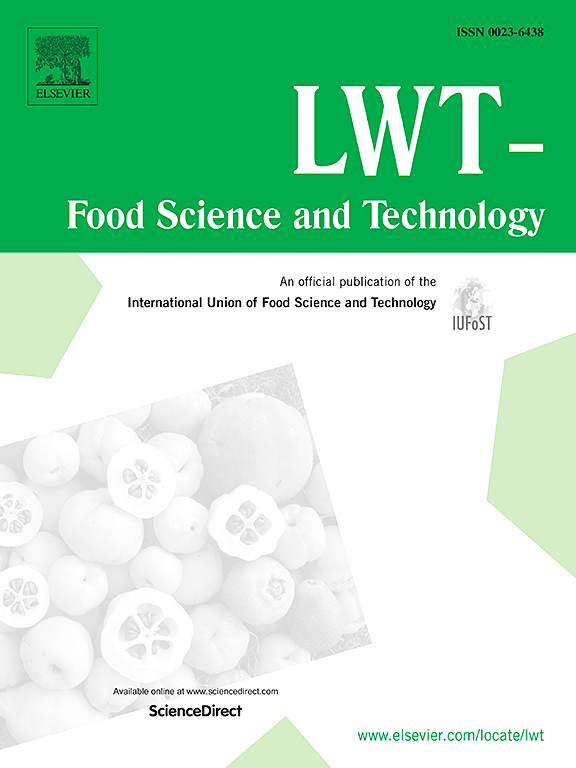Identification and molecular mechanism of novel antioxidant peptides from squid skin protein hydrolysates: In silico and in vitro analysis
IF 6
1区 农林科学
Q1 FOOD SCIENCE & TECHNOLOGY
引用次数: 0
Abstract
Squid skin is rich in collagen and a high-quality source of bioactive peptides. This study aimed to identify novel antioxidant peptides derived from squid skin and to explore their potential molecular mechanism using in silico and in vitro approaches. Two novel peptides QDGFQGAH and SGDNLRFP were identified and demonstrated disparate of free radical scavenging and cytoprotective activities. Subsequent investigations exhibited that peptides were capable of reducing intracellular MDA level, and elevating the levels of antioxidant enzymes, including SOD, CAT, and GSH-Px. Furthermore, compared to the control, the expressions of Nrf2 treated with peptides were increased, while the levels of Keap1 were decreased, and the peptide QDGFQGAH showed the best activity. Molecular docking and dynamic simulations demonstrated that the peptides could form stable interactions with key residues of Keap1 by influencing the amino acid regions (Gly571-Asp589, Ala376-Cys395). Transport experiments on Caco-2 cell monolayers revealed that two novel peptides could traverse the intestinal epithelium. The findings suggest that the two peptides may be considered as potential antioxidant agents in functional foods, and provide a theoretical foundation for the extensive processing of squid skin.
求助全文
约1分钟内获得全文
求助全文
来源期刊

LWT - Food Science and Technology
工程技术-食品科技
CiteScore
11.80
自引率
6.70%
发文量
1724
审稿时长
65 days
期刊介绍:
LWT - Food Science and Technology is an international journal that publishes innovative papers in the fields of food chemistry, biochemistry, microbiology, technology and nutrition. The work described should be innovative either in the approach or in the methods used. The significance of the results either for the science community or for the food industry must also be specified. Contributions written in English are welcomed in the form of review articles, short reviews, research papers, and research notes. Papers featuring animal trials and cell cultures are outside the scope of the journal and will not be considered for publication.
文献相关原料
| 公司名称 | 产品信息 | 采购帮参考价格 |
|---|---|---|
| 索莱宝 |
fetal bovine serum (FBS)
|
|
| 索莱宝 |
Alkaline protease
|
|
| 索莱宝 |
dulbecco's modified eagle medium (DMEM) medium
|
|
| 索莱宝 |
Fetal bovine serum (FBS)
|
|
| 索莱宝 |
alkaline protease
|
 求助内容:
求助内容: 应助结果提醒方式:
应助结果提醒方式:


